#Pygathrix nemaeus
Text
A Taste Of Life

A Douc Langur enjoying its snacks in the local zoo. Photo credit: Jonathan Chua.
#photographers on tumblr#canon 55-250mm#canon eos rp#canon photography#flora fauna#monkey pics#Pygathrix nemaeus#red-shanked douc langur photos#wildlife photography
2 notes
·
View notes
Text
Support yourself

Sleepy douc using red-shank headrest for a nap
The doucs are a family of monkeys often associated with langurs, and is referred to as costume monkeys. They are the most colourful monkeys there are, this one with red shanks, blue and grey fur, yellow-red face and blueish "eye-makeup".
Critical conditions
The doucs are all native to Indochine, the red shanks doucs are native to PR Laos, Viet Nam and northern Cambodia. They are critically endangered, hunted for medicin, food and glue-production. And, being tree-dwellers, human building projects involving removing forest and jungle.
During the hottest hours of the day they seek together and sleeps until the temperature is cooler for having fun, the food and party.
I can totally relate to that.
Learn more in Red-shanked douc (Pygathrix nemaeus).
#bangkokzoo#lostforever#2018#redshanked#douc#Pygathrix#nemaeus#monkey#naptime#red#monkeylegs#chaos#2018CE#bangkok#thailand#lastchancetosee#dusit#zoo#dusitzoo#animalphotography#citylife#citywalk#art#bluesky#buddhism
1 note
·
View note
Text
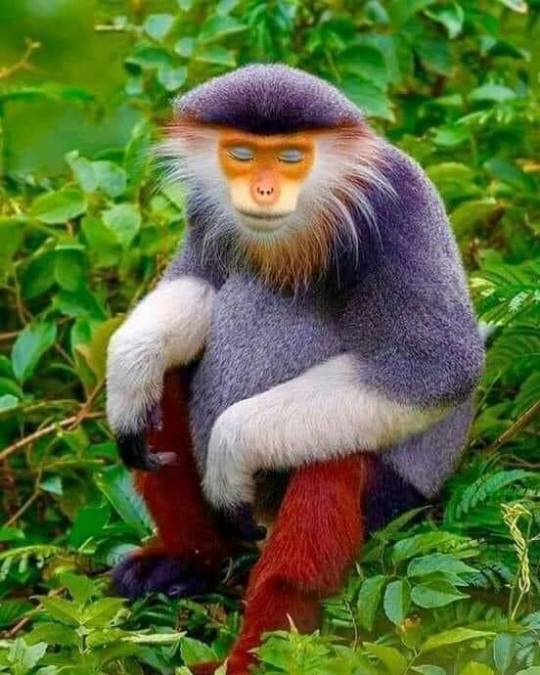
The beautiful red-shanked duoc (Pygathrix nemaeus) is one of the most colorful species of monkey in the world, and is found in Vietnam, Cambodia and Laos.
Photo: Mogens Troll
110 notes
·
View notes
Text

Red-shanked douc (Pygathrix nemaeus)
This fabulous-looking species is found in tropical, sometimes mountainous forests of Southeast Asia. They eat mostly leaves, and have a multi-chambered stomach which allows them to ferment their food, like a ruminant!
#markhors-menagerie#primates#old world monkeys#monkeys#animal facts#fun facts#animals#biology#red shanked douc
67 notes
·
View notes
Text
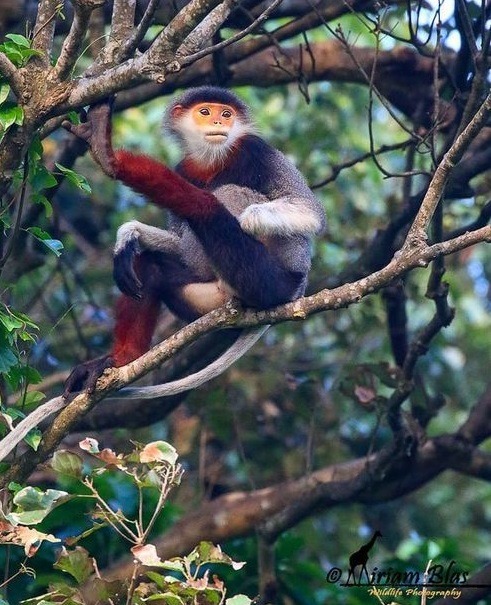
Red-shanked Douc (Pygathrix nemaeus), family Cercopithecidae, found in Laos, Viet Nam, and Cambodia
ENDANGERED.
photograph by Miriam Blas Nombela
48 notes
·
View notes
Text
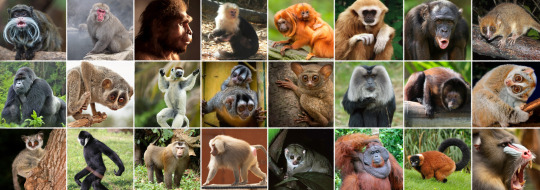
🦍The primate tournament list of candidates has been finalised! Polls will start going up soon!🦧
Thank you to everyone who submitted a species! Here is the full written list:
Basal primates (non-simian primates, including Strepsirrhini and Tarsiiformes)
†Notharctus (Notharctus tenebrosus)
Calabar angwantibo (Arctocebus calabarensis)
West African potto (Perodicticus potto)
Red slender loris (Loris tardigradus)
Bengal slow loris (Nycticebus bengalensis)
Pygmy slow loris (Xanthonycticebus pygmaeus)
Senegal bushbaby (Galago senegalensis)
Brown greater galago (Otolemur crassicaudatus)
Ring-tailed lemur (Lemur catta)
Verreaux’s sifaka (Propithecus verreauxi)
†Archaeoindris (Archaeoindris fontoynontii)
†Megaladapis (Megaladapis madagascariensis)
Madame berthe’s mouse lemur (Microcebus berthae)
Aye-aye (Daubentonia madagascariensis)
Philippine tarsier (Carlito syrichta)
Pygmy tarsier (Tarsius pumilus)
New world monkeys (Platyrrhini)
Wied’s marmoset (Callithrix kuhlii)
Goeldi’s marmoset (Callimico goeldii)
Bearded emperor tamarin (Saguinus imperator subgrisescens)
Golden-headed lion tamarin (Leontopithecus chrysomelas)
Panamanian white-faced capuchin (Cebus imitator)
Central American squirrel monkey (Saimiri oerstedii)
Gray-bellied night monkey (Aotus lemurinus)
Bald uakari (Cacajao calvus)
Madidi titi monkey (Plecturocebus aureipalatii)
Atlantic titi monkey (Callicebus personatus)
Black bearded saki (Chiropotes satanas)
White-faced saki (Pithecia pithecia)
Colombian red howler (Alouatta seniculus)
Brown spider monkey (Ateles hybridus)
Northern muriqui (Brachyteles hypoxanthus)
Yellow-tailed woolly monkey (Lagothrix flavicauda)
Old world monkeys (Cercopithecidae)
Mantled guereza (Colobus guereza)
Zanzibar red colobus (Piliocolobus kirkii)
Nepal gray langur (Semnopithecus schistaceus)
Silvery lutung (Trachypithecus cristatux)
Golden snub-nosed monkey (Rhinopithecus roxellana)
Proboscis monkey (Nasalis larvatus)
Red-shanked douc (Pygathrix nemaeus)
Collared mangabey (Cercocebus torquatus)
Japanese macaque (Macaca fuscata)
Rhesus macaque (Macaca mulatta)
Hamadryas baboon (Papio hamadryas)
Mandrill (Mandrillus sphinx)
Gelada (Theropithecus gelada)
Common patas monkey (Erythrocebus patas)
Bale mountains vervet (Chlorocebus djamdjamensis)
De brazza’s monkey (Cercopithecus neglectus)
Apes (Hominoidea)
Lar gibbon (Hylobates lar)
Pileated gibbon (Hylobates pileatus)
Kloss’s gibbon (Hylobates klossii)
Northern white-cheeked gibbon (Nomascus leucogenys)
Siamang (symphalangus syndactylus)
†Junzi (Junzi imperialis)
Bornean orangutan (Pongo pygmaeus)
†Gigantopithecus (Gigantopithecus blacki)
†Dryopithecus (Dryopithecus fontani)
Western lowland gorilla (Gorilla gorilla gorilla)
Chimpanzee (Pan troglodytes)
Bonobo (Pan paniscus)
†Australopithecus (Australopithecus afarensis)
†Panranthropus (Panranthropus boisei)
†Flores hobbit (Homo floresiensis)
†Neanderthal (Homo neanderthalensis)

The first set of polls will go up as soon as I have finished writing the descriptions! In the meantime, I would appreciate if you could share this tournament around- it won’t be much of a tournament if there aren’t that many people voting! In going down the research rabbit hole I’ve found so many interesting species and stories, and I promise learning about them here will be worth your time!
#primate bracket#tournament#tumblr tournament#poll#polls#primate#primates#extinct primates#biology#animals#zoology#please let me know if I made a mistake anywhere!
97 notes
·
View notes
Text
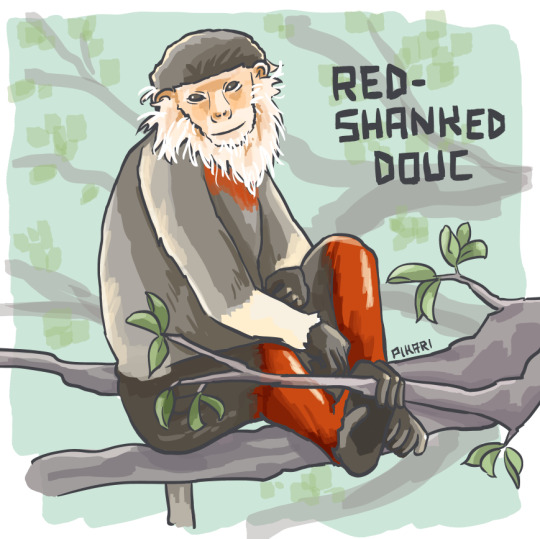
The past is already gone. The future is not yet here. Look deeply at life in the here and now.
—Gautama Buddha
Red-Shanked Douc (Pygathrix nemaeus)
Laos, Vietnam, Cambodia
Status: Critically Endangered
Threats: illegal trade and hunting, habitat fragmentation
-----
Here's your monkey!! Thanks for getting me past 100 followers, and welcome to all new followers! 💚
I found these doucs the other day while looking at other species in Vietnam. These are officially my favorite monkey now!!* I am in love with their angelic faces. I feel like they must all be ascended buddhas with their childlike but ageless faces (even their behavior is peaceful compared to other species), so I looked for a buddha quote as the caption today.
I realized I want my blog to reflect this spirit. When thinking about endangered species, it can be too easy to despair about both the future and the past. But I just want to show the beauty** of what we have today.
(*I don't believe I had a favorite monkey before, but I do now.)
(**And that includes the weirdos!)
#which doesn't mean not to act today#but that we shouldn't project ourselves into anything but the present#as much as is possible#hopepunk#monkey#monkey art#primate#vietnam#laos#cambodia#asia#southeast asia
10 notes
·
View notes
Text

Red-shanked duoc (Pygathrix nemaeus) is one of the most colourful species of monkey in the world, and is found in Vietnam, Cambodia and Laos.
27 notes
·
View notes
Photo

🔥A male Red-shanked douc (Pygathrix nemaeus) from the forested mountains of Vietnam
0 notes
Photo

Red-shanked douc (Pygathrix nemaeus) at Sơn Trà Mountain in Vietnam
Sheau Torng Lim
158 notes
·
View notes
Photo



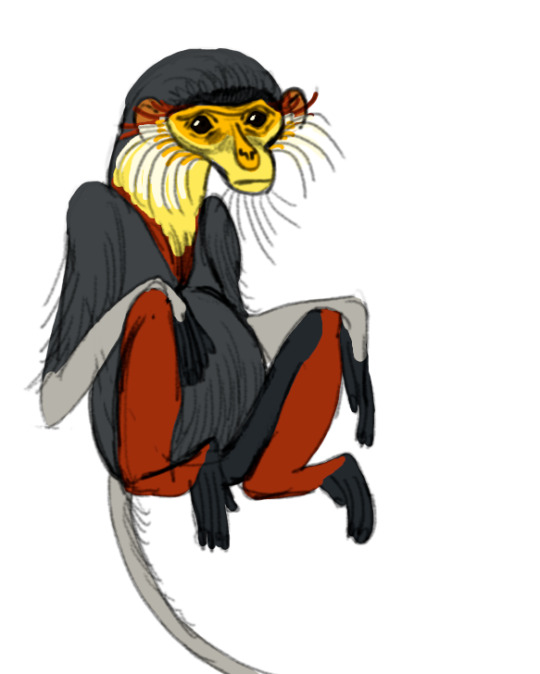
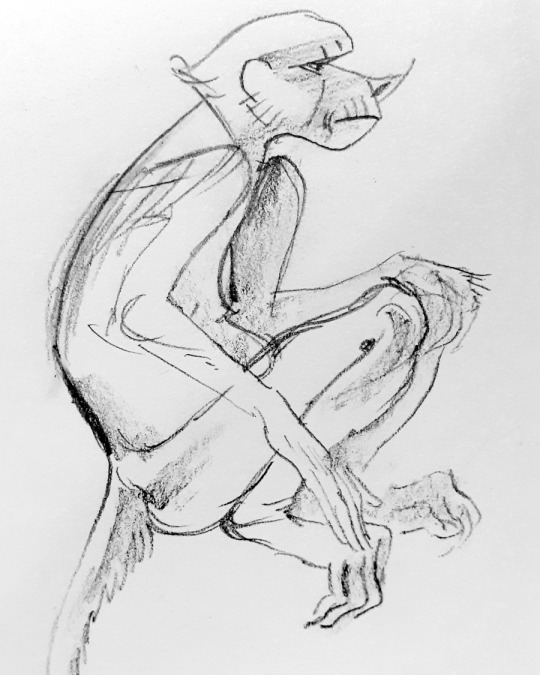

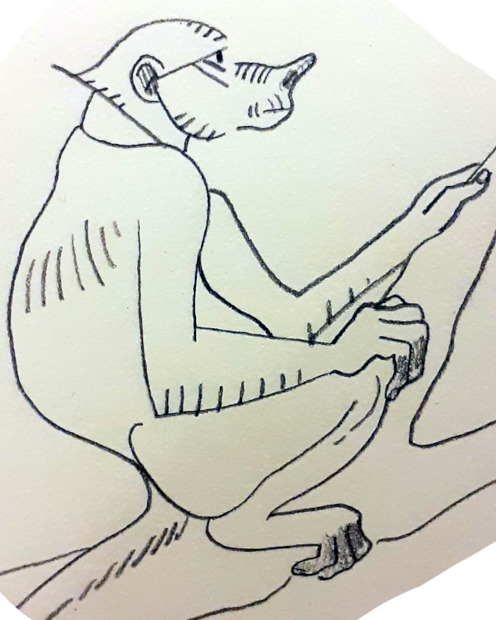
some very speedy drawings of a couple of cool monkeys (species in captions)
#character design#sketchbook#monke#Rhinopithecus bieti#Pygathrix nemaeus#Nasalis larvatus#Black-and-white snub-nosed monkey#snub-nosed monkey#Red-shanked douc#Proboscis monkey#animals and nature
11 notes
·
View notes
Photo
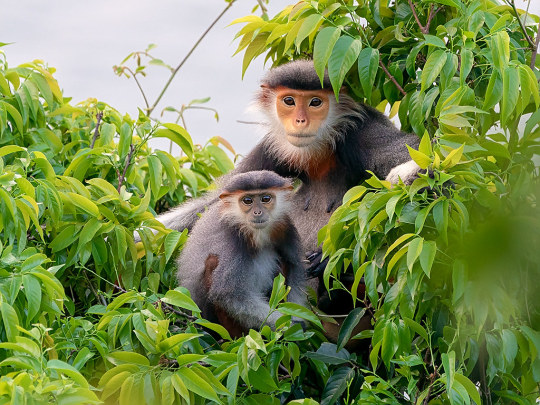
Red-shanked douc (Pygathrix nemaeus)
Photo by David Cook
#red shanked douc#douc langur#pygathrix nemaeus#pygathrix#colobinae#cercopithecidae#catarrhini#simiiformes#haplorrhini#primates#primatomorpha#euarchontoglires#boreoeutheria#eutheria#mammalia#tetrapoda#vertebrata#chordata
77 notes
·
View notes
Text

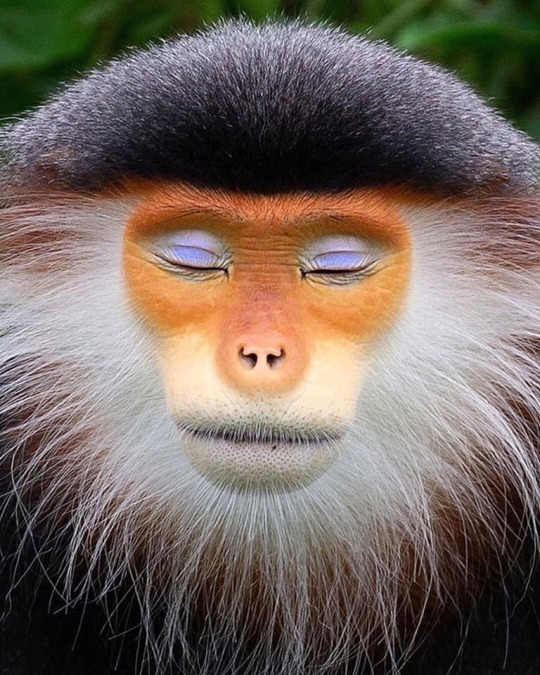

red-shanked douc (Pygathrix nemaeus)
#monkey model....#i saw it and i was absolutely gagged i tell you#animals#primates#monkeys#red-shanked douc#Pygathrix nemaeus
1 note
·
View note
Text
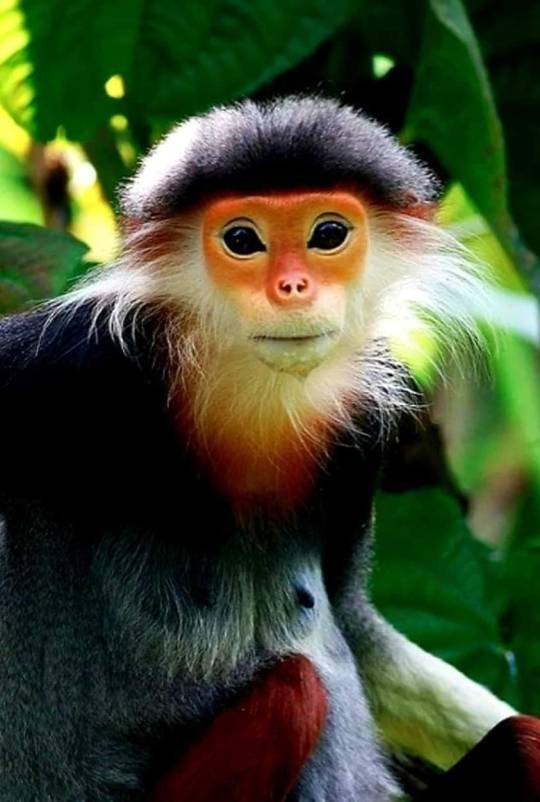
Nature is Awesome
Gavasheli Mari .
The red-shanked douc (Pygathrix
nemaeus) is a species of Old World
monkey, among the most colourful of all
primates. It is an arboreal and diurnal
monkey that eats and sleeps in the trees of the forest
34 notes
·
View notes
Photo

Right page doodle🐒
#doodle#illustration#eat sleep draw#Doug Iangurs#Pygathrix nemaeus#drawing#artists on tumblr#marker#black#monkey#face#adorable little monkey face poo#🐵🙈🙉🙊🐒#art#illustrations#new world#triply#artistsontumblr
4 notes
·
View notes
Photo
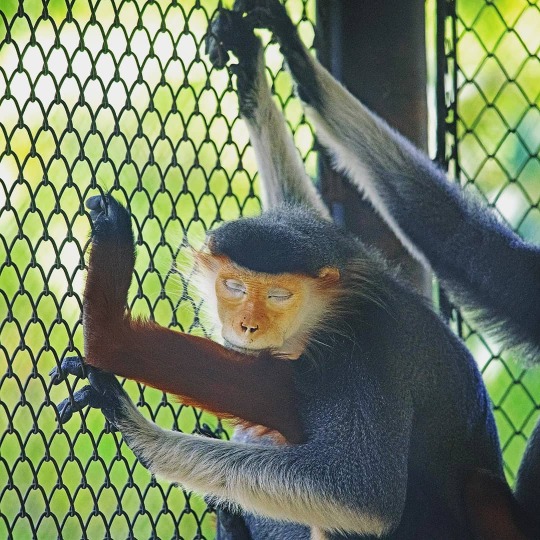
Sleepy douc using red-shank headrest for a nap The doucs are a family of monkeys often associated with langurs, and is referred to as costume monkeys. They are the most colorful monkeys there are, this one with red shanks, blue and grey fur, yellow-red face and blueish "eye-makeup". The doucs are all native to indochine, the red shanks doucs are native to PR Laos, Viet Nam and northern Cambodia. They are critically endangered, hunted for medicin, food and glue-production. And, being tree-dwellers, human building projects involving removing forrest and jungle. During the hottest hours of the day they seek together and sleeps until the temperature is cooler for fun, food and party. I can totally relate to that. Red-shanked douc (Pygathrix nemaeus) https://en.m.wikipedia.org/wiki/Red-shanked_douc #bangkokzoo #lostforever #2018 #redshanked #douc #Pygathrix #nemaeus #monkey #naptime #red #monkeylegs #chaos #grooming #selfconfidence #2018CE #bangkok #thailand #lastchancetosee #dusit #zoo #dusitzoo #animalphotography #birdphotography (ved Dusit Zoo, Bangkok, Thailand) https://www.instagram.com/p/CHnkVkkJUCK/?igshid=wkwav2d4f36j
#bangkokzoo#lostforever#2018#redshanked#douc#pygathrix#nemaeus#monkey#naptime#red#monkeylegs#chaos#grooming selfconfidence 2018CE bangkok thailand lastchancetosee dusit zoo dusitzoo animalphotography birdphotography
0 notes